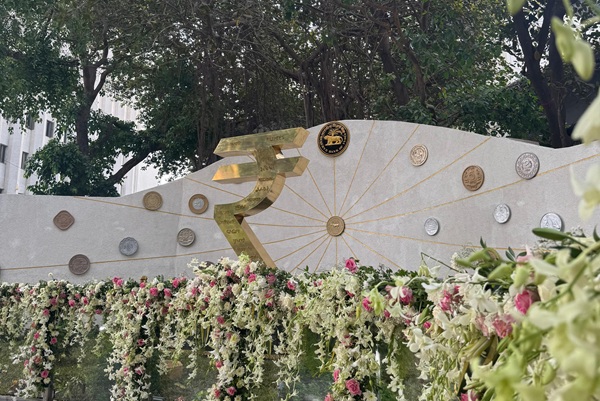.png)
The Cult of the Confident: How India Fell for Online “Experts”
From fitness hacks to financial “wisdom,” India’s feed is full of confident creators. But when charisma outpaces credibility, who pays the price? Often, all of us.

Kalyani Srinath, a food curator at www.sizzlingtastebuds.com, is a curious learner and a keen observer of life.
November 1, 2025 at 6:57 AM IST
They talk like your friend, smile like they know you, and promise to change your life in thirty seconds or less. They’re the new prophets of the feed—peddling instant wisdom, effortless wealth, miracle foods, and inner peace at the swipe of a thumb. Their confidence is dazzling, their certainty infectious, and their expertise? Often just an illusion polished to perfection under good lighting.
Welcome to India’s digital bazaar of “online experts,” where conviction sells better than truth and everyone seems to have a secret formula for everything: health, happiness, or hustle. They aren’t lying outright; they’re performing belief. And in a country that’s both deeply curious and endlessly connected, that performance has become a phenomenon.
The influencer boom began as the democratisation of voice. Suddenly, anyone with a phone and flair could reach millions. It was supposed to be liberation from gatekeepers and hierarchies. But like all revolutions, it morphed. Somewhere along the way, expertise stopped being earned and started being declared.
Today, the Indian internet is overflowing with digital “gurus” who feed on a restless generation’s hopes and insecurities. They speak with the kind of authority that institutions often lack—direct, emotional, and seemingly human. Why read dense financial reports when someone on Instagram can explain it “simply”? Why book a doctor’s appointment when a confident stranger online swears by a home remedy?
Confidence, after all, feels easier to trust than logic.
Attention As Truth
Take health content, for example. One day you’re told to cut out all carbs; the next, someone insists you can live solely on fruit. Another will tell you all anxiety can vanish if you “manifest harder.” Followers listen not because they’re foolish, but because the message sounds comforting. The world feels uncertain, but the influencer looks certain.
It isn’t that the audience doesn’t care about truth. It’s that truth feels distant, buried behind jargon and inaccessibility. The influencer, on the other hand, speaks your language. They look like someone you could DM. In that intimacy, trust is born.
And yet, that intimacy is precisely what makes misinformation so dangerous. It bypasses skepticism. The harm isn’t always immediate; it’s cumulative—eroding our ability to tell wisdom from performance.
A young diabetic starts skipping medications after watching a “natural cure” video. A small investor pours savings into a shady “stock tip” group. A student, lost in endless advice reels, begins believing all mental health struggles can be fixed through “positive thinking.” The world’s noise starts to sound like truth, simply because it’s everywhere.
And so the digital timeline fills with half-truths—snippets of half-baked “research,” pseudoscientific advice, or recycled motivational jargon—that sound convincing enough to pass as fact. These fragments, untested and often unverified, have become the gospel of India’s new social media age. Their danger lies precisely in their simplicity: information without context, solutions without understanding, certainty without skepticism.
From the eight-year-old watching a “life hack” video to the 80-year-old forwarding health remedies on WhatsApp, no demographic is untouched. The great flattening power of the smartphone has made both access and misinformation infinitely democratic. Practically anyone with a camera and a ring light can (mis)influence millions. In minutes, an unknown face can become a national “expert,” shaping perceptions in health, finance, politics, diet, medicine, or law—all without a trace of qualification.
That ease is startling when measured against the grind of genuine expertise. Professionals in medicine, law, finance, and academia spend years, often decades, mastering disciplines before publishing even a single credible paper or certified opinion. Their work endures scrutiny, data, and peer review. Yet online, a creator with no scientific training can mimic their authority in a fraction of a second. The difference? The professional works to inform, the influencer performs to provoke.
This widening gap is not just about accuracy—it’s about perception. When millions encounter a steady diet of confident misinformation, genuine expertise begins to look dull. The careful tone of an actual professional—tentative, nuanced, cautious—can’t compete with the cinematic certainty of a reel. Ordinary people, bombarded by charismatic personalities and shortcut answers, slowly lose patience for anything that doesn’t fit into an easy narrative.
The result is a slow cultural erosion: facts are suspect, feelings are factual, and research becomes redundant. It’s not that Indians have stopped caring about truth—it’s that the medium has made truth feel outdated, heavy, and slow.
Half-Truths, Whole Consequences
Some will tell you that this is progress, the natural chaos of a system adjusting to openness. But in India’s roaring social media ecosystem, chaos feels less like evolution and more like erosion. When everyone gets to be an expert, expertise itself stops meaning anything. Knowledge becomes a performance. Credibility becomes aesthetic.
Interestingly, one country has already tried to rein in this storm—China, which decided that only those with verified credentials can talk publicly about professional subjects like health, law, or finance. Whether one admires or fears that move, it stemmed from a recognition that misinformation is no longer a nuisance but a national mirror, reflecting what people want to believe rather than what they need to know.
India, meanwhile, still laughs along with its charlatans. The digital stage is crowded with personalities peddling shortcuts—for beauty, for wealth, for wellness. Every scroll brings a promise wrapped in empathy and ends with a sales pitch. The internet’s loudest generation, once hungry for knowledge, now settles for noise.
But the reckoning will come.
Because half-truths have a way of turning on their creators—and their believers.
Misinformation may feel harmless until it begins to cost something tangible: health, money, trust. When advice without research begins to shape public choices, the line between entertainment and harm blurs irrevocably.
The irony is inescapable: a country with one of the world’s oldest traditions of scholarly rigour—from Ayurveda to astrophysics—is now being unstitched by influencers who mistake virality for validation. What India risks isn’t simply a few bad ideas online—it’s a slow, collective dulling of its intellectual standards.
Still, hope lingers at the edge of the scroll.
Every like, share, and view is also a choice—a quiet vote for what kind of information survives in the long run. The responsibility doesn’t only lie with platforms but with the audience too. After all, attention is the new currency, and every click funds a certain kind of future.
Because the truth hasn’t disappeared; it’s merely whispering, trying to cut through the riot of sound. And if we keep mistaking volume for wisdom, one day we may find ourselves applauding the loudest fool in the room—convinced all the while that we’re listening to a genius.



